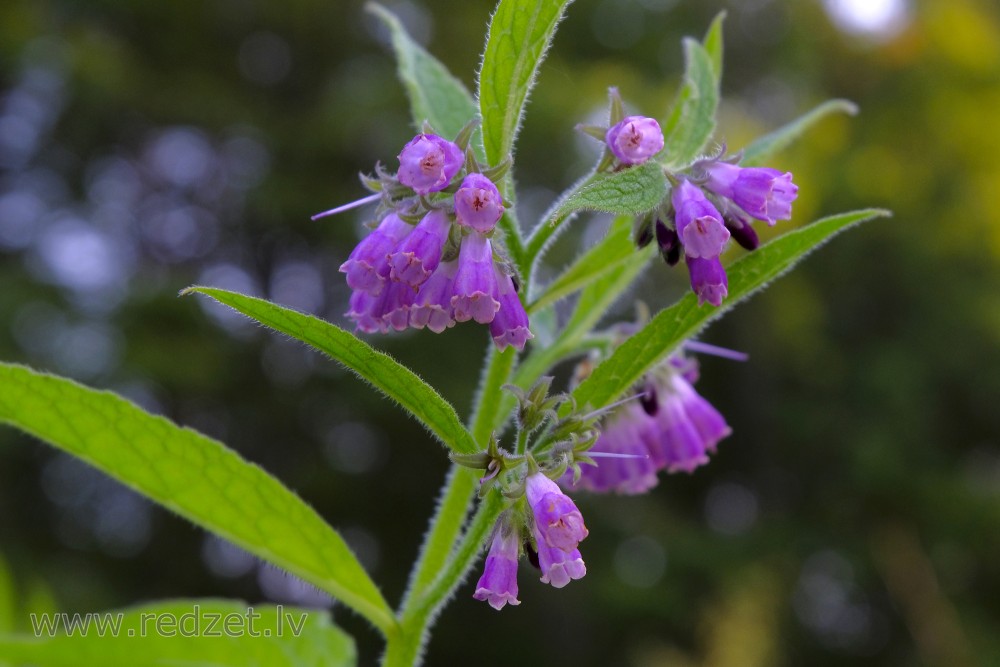Symphytum officinale (Common comfrey)
Symphytum officinale is a perennial flowering plant in the family Boraginaceae. Along with thirty four other species of Symphytum, it is known as comfrey. To differentiate it from other members of the genus Symphytum, this species is known as common comfrey or true comfrey. Other English names include Quaker comfrey, cultivated comfrey, boneset, knitbone, consound, and slippery-root. It is native to Europe, growing in damp, grassy places. It is locally frequent throughout Ireland and Britain on river banks and ditches. It occurs elsewhere, including North America, as an introduced species and sometimes a weed. The flowers are mostly visited by bumblebees.
Description
The hardy plant can grow to a height of 1.3 m (4 ft). It is a perennial herb with a black, turnip-like root and large, hairy broad leaves that bears small bell-shaped flowers of various colours, typically cream or purplish, which may be striped.
A common hybrid is formed between Symphytum officinale and S. asperum, Symphytum × uplandicum, known as Russian comfrey, which is widespread in the British Isles, and which interbreeds with S. officinale. Compared to S. officinale, S. × uplandicum is generally more bristly and has flowers which tend to be more blue or violet.
Uses
In folklore, Symphytum officinale roots were used in traditional medicine internally (as an herbal tea or tincture) or externally (as ointment, compresses, or alcoholic digestion) for treatment of various disorders. Internal consumption is discouraged it may be toxic to the liver.
Ecology
The plant was rated in fourth place for per day nectar production per flower in a UK plants survey conducted by the AgriLand project which is supported by the UK Insect Pollinators Initiative. When number of flowers per floral unit, flower abundance, and phenology were taken into account it was the only member of the top 10 list for that measurement that also placed in the top 10 list for most nectar per unit cover per year. This means that this plant not only produces a great deal of sugar in its nectar on a daily basis, it provides a lot of nectar when compared to other UK plants tested in that survey on a yearly basis, making it a strong source of nectar overall.
en.wikipedia.org
https://en.wikipedia.org/wiki/Symphytum_officinale
Continue reading